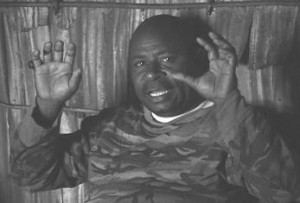Throughout history and across the planet, come reports of featherless flying creatures that glow at night. They have been called dragons, fiery flying serpents, ropens, and pterosaurs. What about Marfa Lights? Those that fit into what Bunnell calls “CE-III” mystery lights characteristics—those lights behave like they were intelligent. Perhaps the old legends of crafty dragons are not 100% fictional.
Consider some things written about Marfa Lights within the past year or so. It seems that the circumstantial evidences supporting this flying-predator (even pterosaur) idea continue to mount. If there were nothing to it, why would new circumstantial evidence accumulate?
Marfa Lights to Monstrous Heights
How do mysterious lights flying in southwest Texas relate to the concept of modern pterosaurs living in North America? To be brief, the coorelation is indirect and questionable; it would be better to say “unclassified bioluminescent flying predator,” possibly similar to the ropen of Papua New Guinea. But observations around Marfa, over many years, indicate some of the strange lights flying in this area of Texas seem to fly together in complex ways, in ways that suggest the lights are directed by intelligence or intelligences. In addition, the one-or-two-night limitations of those particular lights, and their returning about once a month, suggest the roaming habits of a group of predators.
Much of this post on Cryptid Eyewitness relates to barn owls, explaining a bit about the research done by Fred Silcock of Australia. Some barn owls, at least sometimes, seem to have an intrinsic bioluminescence.
The ghost story of a headless man searching for his head sounds like the story of the Bingham Lights of South Carolina and the Maco Lights of North Carolina and the Gurdon Light of Arkansas and . . . well, headless ghosts searching endlessly for their heads, especially down railroad lines—those stories seem endless. But with a little knowledge of the bobbing, weaving Min Min of Australia, only a little brain power can enlighten us: Australians describe the same thing.
For a nocturnal rodent, how far is it exposed while crossing railroad tracks? Too far to be comfortable in daylight. But in the dark of night, why worry? Take your time. A midnight snack, for a rat, can be easy to find; humans throw trash near the tracks. Dine where you find it . . . until . . . oops.
. . . The dance patterns of Marfa Lights resemble no flock of hunting barn owls. No, our old friend Tyto Alba cannot compete here and it dare not try. But it has illuminated part of the answer to the puzzle. The predators of Southern Texas show greater intelligence than most birds and some of them may be larger than any owl. This cryptid may be related to the ropen of Papua New Guinea . . .
That post explains that the Marfa Lights behave like a group of flying predators that are more intelligent than a flock of barn owls. The point about the barn owls (Min Mins) is that there is a species known to science that has an apparently intrinsic bioluminescence that may not have yet been documented in a scientific journal.
What an extraordinary idea! Marfa Lights come from glowing pterodactyls? How could such a wild idea have any merit? Consider what critics have written about that idea; you may be surprised. When the sarcasm is brushed aside, as we eventually must do to all sarcasm, the arguments against the bioluminescent-pterosaur idea appear weak, once they have been examined.
What a far cry from scientific skepticism! How convenient, when “hundreds” of witnesses experience something contradicting ones idea, to say it came from drinking whiskey!
To be fair to Mr. Dunning, we need to remember that some of these sighting reports are quite strange: flying lights that seem to fly in ways related to each other. These flights are too complex–I believe “complex” is the word used by James Bunnell–to be easily explained as an ordinary phenomenon. But the strange reactions some person might have to consuming alcohol does not mean that all strange experiences should be dismissed with “whiskey.” We can admit that not-yet-explained things may exist.
Indeed, and it would have been poor reasoning, on the part of physicists of the early twentieth century, if they had dismissed Einstein’s General Theory of Relativity as something coming from drinking whiskey.
Indava of Papua New Guinea and Marfa Lights
This post compares the strange flying lights deep in the mainland of Papua New Guinea with the strange flying lights in southwest Texas. Those similarities should be noted. It also mentions that critics of living-pterosaur investigations rarely, if ever, have mentioned the sighting of Pastor Jacob Kepas, during the Paul Nation expedition of late-2006. Kepas saw an indava in daylight, a large winged creature sleeping high on a cliff (that was confirmed by a native man who climbed higher up to get a better view).



